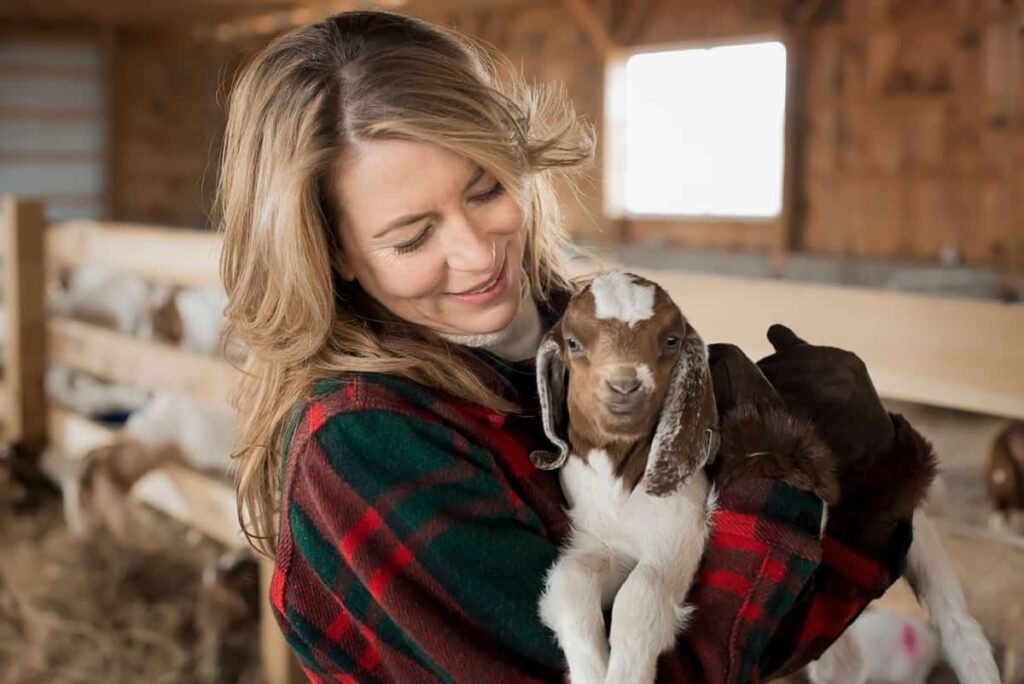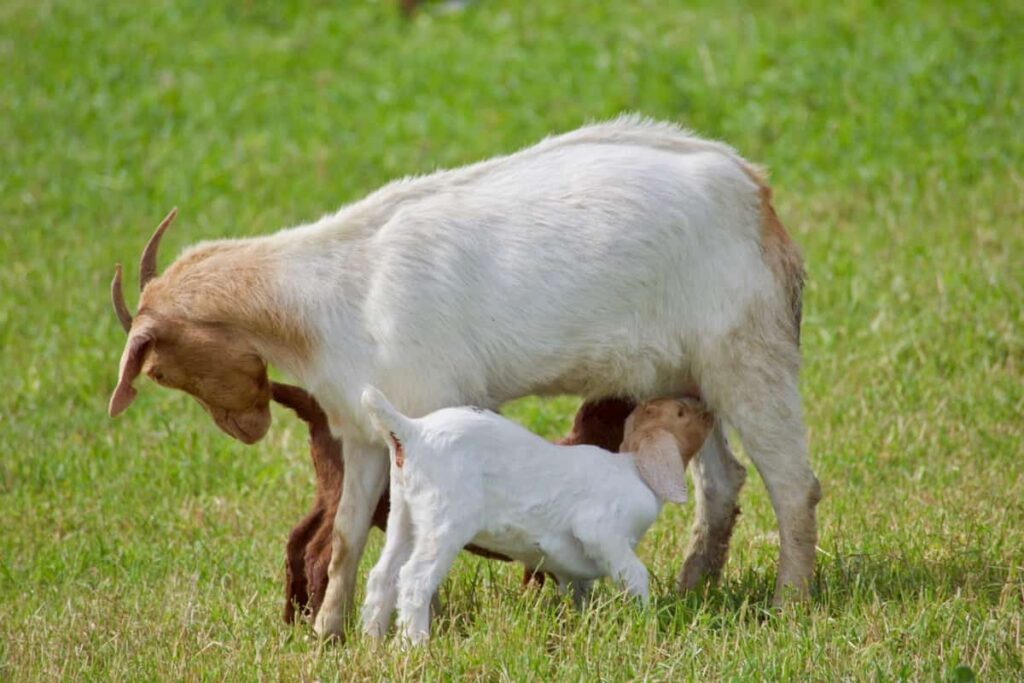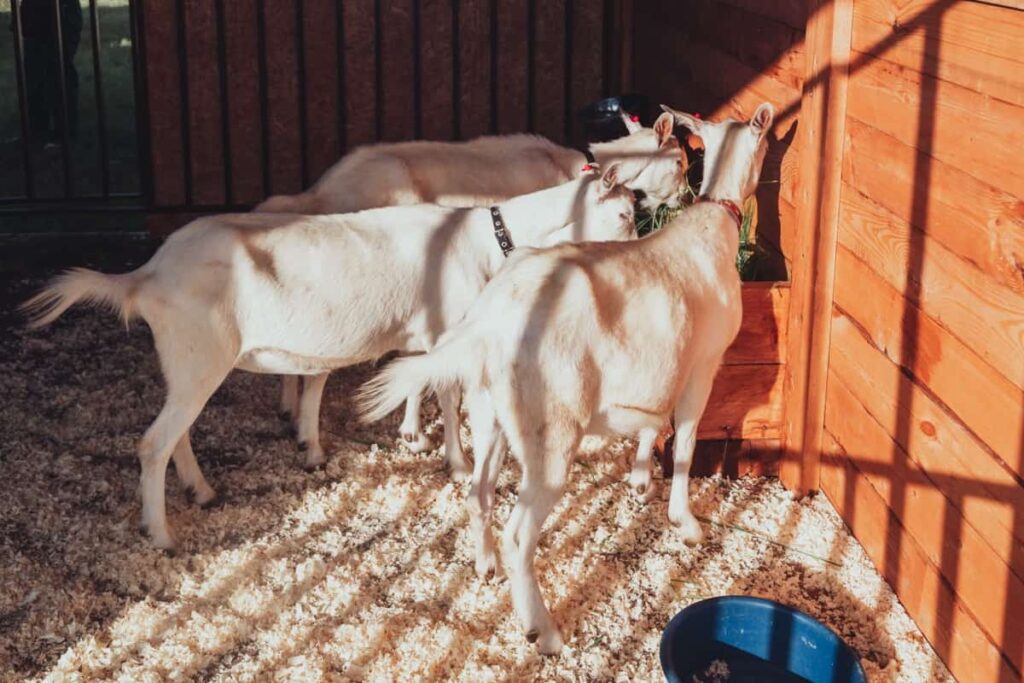Goat breeding and genetics are important in improving productivity and disease resistance in goats. Selective breeding allows farmers to improve traits such as milk production, growth rate, and disease resistance. The genetic makeup of a goat is a major determinant of its overall performance, including its resistance to common diseases. Proper selection of breeding stock based on performance data is important for successful breeding programs.

Best practices for breeding management, such as controlled breeding seasons, proper nutrition, and herd health management, should be followed for optimal breeding success. Goat breeds with high productivity and disease resistance, such as the Boer and Saanen breeds, are good examples of the benefits of selective breeding. Understanding the principles of goat breeding and genetics is crucial for farmers looking to improve their herd’s overall performance and health.
Goat Breeding and Genetics
What are Goat Breeding and Genetics?
Goat breeding and genetics refer to the selective breeding of goats to improve their performance in meat, milk, fiber production, disease resistance, and overall health. Traditionally, this involved the introduction of new breeds and strains, within-breed selection, and crossbreeding. However, animal breeding has been revolutionized with the sequencing of the ovine and goat genomes and the development of high-throughput SNP arrays.
Despite these advances, our knowledge of the genetic mutations affecting crop, production and health traits in goats and sheep still needs to be improved. Breeders of small ruminants face new challenges, including climate change, increased awareness of animal welfare and the environment, and consumer demand for high-quality meat and milk products. Modern breeding tools such as cloning, transgenesis, gene editing, and microbiome genotyping may expand each species’ genetic variation. This may lead to the breeding new traits and products, such as goats that produce milk with specific health benefits.
Importance of Goat Breeding and Genetics
- The genetic makeup of a goat determines its traits, such as milk and meat production, disease resistance, and growth rate. Selective breeding allows farmers to improve these traits by introducing new breeds, within-breed selection, and crossbreeding.
- Genetic improvement takes time and is influenced by factors such as the heritability of traits, generation interval, and selection differential. Selecting breeding stock based on performance data is essential for successful breeding programs.
- Ram selection is the most influential driver of ongoing genetic improvement, as a single ram can sire up to 60 lambs annually. Genetic improvement benefits individual breeders and the broader goat industry by increasing productivity and profitability.
- Modern breeding tools such as cloning, transgenesis, gene-editing, and microbiome genotyping can expand genetic variation in goat breeds, leading to breeding for new traits and products.
- Improved genetic merit can also help meet market requirements, improve overall productivity and profitability, and improve specific traits of a flock, such as growth rate, carcass yield, fleece weight, and fiber diameter.
Breeding Principles and Strategies in Goat Farming
- The adaptability of the breed to local agro-climatic conditions
- Socio-economic conditions of the farmer
- Market demands
- Availability of good quality bucks
- Conservation of indigenous recognized breeds by preventing them from genetic dilution
Breeding strategies for improving chevon production include improving growth rate, body weight, reproductive efficiency, dressing percentage, and reducing mortality. Crossing indigenous breeds with exotic breeds such as Anglo-Nubian and Boer goat can improve growth rate and chevon production in areas with good quality feed resources. Both selective pure breeding and crossbreeding can be adopted based on local needs and market demands.
Growth traits are highly heritable, so the response to selection will be better. Breeding strategies for improving goat milk production involve using exotic breeds like Alpine and Sannen with indigenous breeds such as Jamunapari, Beetal, Barbari, Jhakrana, Sirohi, and Surti. Both selective breeding and crossbreeding can be adopted based on local needs and market demands.
In case you missed it: Innovative Housing and Shelter Designs for Profitable Goat Farming

- Milk yield traits are medium to high heritable, so the response to selection will be better. Performance recording and progeny testing programs can select and propagate elite bucks.
- Nucleus flocks/herds can be established with best-performing females and their male progenies and linked with farmers’ flocks.
- Artificial insemination with liquid and preferably frozen semen may be adopted to make the progeny testing program more effective.
- Crossbreeding of low-producing indigenous breeds with Sannen goat breeds can boost milk production, survivability, and reproduction in areas with better feed resources.
Genetics of Productivity and Disease Resistance
- Identifying superior animals through genetic selection can lead to better performance and higher productivity.
- Selection of breeding animals should be based on traits such as milk yield, growth rate, and disease resistance.
- Milk yield is a highly heritable trait in goats, and selective breeding can improve milk production and Disease resistance in subsequent generations.
- The growth rate is also highly heritable, and selecting faster-growing animals can improve meat production.
- Disease resistance can be improved through selective breeding for immune response and parasite resistance traits.
- The use of genomic selection and marker-assisted breeding can aid in identifying animals with superior genetic potential.
- Effective breeding strategies should consider the conservation of indigenous breeds and the maintenance of genetic diversity.
- Crossbreeding can be used to introduce desirable traits from other breeds, but careful selection and monitoring are necessary to prevent the loss of genetic diversity.
Selecting Breeding Stock
- Milk yield: Choose goats with high milk yield potential, which is a highly heritable trait. Consider breeds such as Alpine, Saanen, and Nubian, known for their milk production.
- Meat: Select breeds such as Boer and Kiko for meat production. Look for goats with fast growth rates, good body conformation, and a high dressing percentage.
- Fiber: Choose breeds such as Angora or Cashmere goats for fiber production. Select animals with long, fine, and lustrous fibers.
- Disease resistance: Select animals resistant to common diseases in your area, which can be achieved through selective breeding. Look for goats with good immune systems and parasite resistance.
- Improved productivity: Choose animals with good reproductive performance, such as high fertility rates, easy kidding, and good mothering abilities.
- Genetic diversity: It’s important to maintain genetic diversity by selecting breeding stock from different breed lines and avoiding inbreeding.
- Performance record: Regularly record the goat’s productivity, physical growth, and health condition to identify the best breeding stock easily.
Breeding Management in Goat Farming
Male-Female Ratio
1:20 is the ideal male-female ratio.
Mating
Young males should be put with experienced older ewes, and older rams should be put with younger ewes for better mating. Inbreeding should be avoided, and males should be replaced or exchanged once every two years. Breeding ewes of indigenous breeds should be between 18 to 24 months, depending on their body condition. Breeding too young ewes can result in weak offspring and higher lamb loss. The body weight of the ewe at breeding should be less than the adult body weight of that breed.
Oestrous Detection
Oestrous detection should be done for all female goats above one year. This can be done with an approved or vasectomized buck during the breeding season. The normal breeding season is from September to October, February to March, and May to June. Either the does, and the buck can see each other freely thanks to modern hormonal synchronization methods, or the buck can be kept in a corral separated from the does by woven-wire netting.
Conception
If one buck and one doe, or two to three does (not exceeding) in heat, are permitted to remain together for an entire day or night throughout three cycles, 90 percent of the eggs fertilized will result in a live birth. Two services spaced 8 to 12 hours apart have increased the likelihood of a successful pregnancy.
Kidding
A scheduled breeding summer season from 15 May to 15 June can help avoid kidding in winter. This will protect kids from winter pneumonia and cold susceptibility. Starving goats early in pregnancy might absorb a lot of shed embryos. They should be expelled after a year of not joking.
Reproductive Parameters
Goats breed at 6-8 months. They come into heat 21 days after lambing and have a 144-152-day pregnancy. 1:20 male-to-female. Ewes have estrous every 16-17 days (range 14-19 days) and do every 19-21 days. (range 17-24 days). Ewes’ estrous phase lasts 24-36 hours and does’ 34-38.
In case you missed it: A Guide to Small-Scale Rural Goat Farming: Tips, Tricks, and Best Practices

Estrous Signs
The estrous signs exhibited by female animals in the estrus period are reddening of the vulva and discharge from the vulva, tail wagging, mounting other animals, seeking males, frequent bleating, pushing her back, and standing for mating (standing reflex).
Conclusion
Goat breeding and genetics are crucial in improving productivity and disease resistance. Selective breeding based on desirable traits can increase milk production, growth rate, and meat quality, while genetic testing can help identify disease-resistant animals. Proper management practices, including nutrition and health care, can enhance goat productivity and overall herd health.
- Types of Grass Growing for Goat Farm
- How to Train Goats for Milking: A Beginners Guide
- Goat Milking Practices and Equipment: A Beginner’s Guide
- Goat Farming for Fiber: Producing Mohair and Cashmere
- Maximizing Goat Milk Production: Tips for Dairy Goat Farmers
- Goat Farming as a Family Business: Strategies for Success
- Profitable Kenya Goat Breeds for Commercial Dairy and Meat Business
- Unlock the Secrets of Oberhasli Goat: Discover Raising and Management Practices
- Ultimate Guide to Myotonic Goats: Explore Profile to Raising